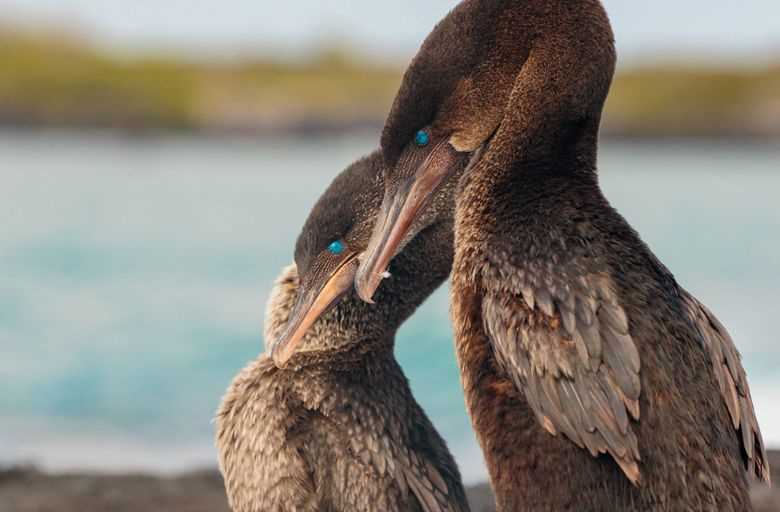We woke up to the view of large volcanoes in the distance, as the National Geographic Endeavour II navigated the western waters of the Galapagos. We soon encountered a pod of around 300 common dolphins swimming around the ship. This time of the year, these waters are very productive, so marine life is abundant.
After breakfast, we had a dry landing on the youngest of the Galapagos. Fernandina has black lava fields and a large amount of wildlife. Punta Espinoza is the name of the only visitor site on Fernandina, and we hiked along the trails covered with several marine iguanas basking under the sun. A couple of young Galapagos hawks were feasting on leftover sea lion placenta. It is the time of the year when some female sea lions give birth on Fernandina, and we spotted a couple of brand-new babies.
One of the highlights of our morning walk was seeing the courtship of Galapagos flightless cormorants. This is the beginning of the breeding season for flightless cormorants to breed, so male and female performed swan-like courtship movements along the shoreline of the black lava flows.
After the walk, we went deep-water snorkeling off the coast of Fernandina. We were able to see several marine iguanas feeding underwater, which is quite unique. These are the only seagoing iguanas on the planet. Marine iguanas dive in search of green algae growing on rocks in the shallows around the coast of Fernandina. Several Pacific green sea turtles also joined us.
In the afternoon, we relocated to Isabela Island. A Zodiac ride was offered to see the wildlife off the coast of Punta Vicente Roca. We had the opportunity to find a couple of Galapagos penguins, this being the northernmost penguin species in the world. Several penguins rested on rocks while others fished along the coast. The geology at Punta Vicente Roca was an interesting landscape of tuff and basalt, with the colors of iron oxidation contrasting with the cliffs at this visitor site.
After our Zodiac ride, our ship crossed the equator line, and we had a celebration of this crossing at sunset, capping off another incredible day in the Galapagos.







